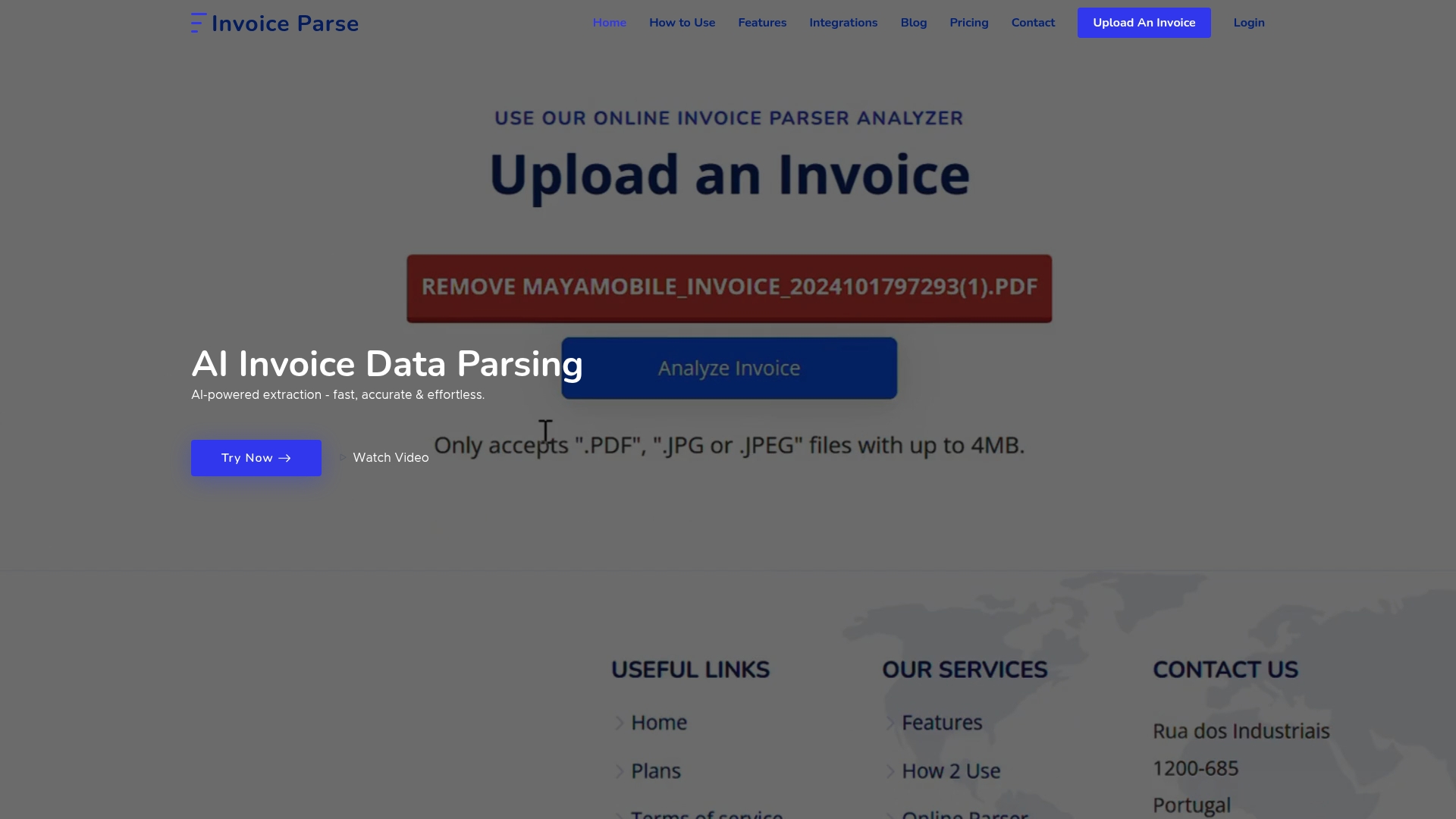Over 2.5 quintillion bytes of data are created every day, yet most of this information sits unused or hidden in unstructured formats. Businesses depend on reliable methods to collect, convert, and organize this data for smarter decisions and smoother operations. Modern data capture solutions now turn endless streams of raw information into precise digital assets, helping companies reduce errors, save time, and create a solid foundation for growth.

What Is Data Capture? Complete Guide for 2025
Table of Contents
- Defining Data Capture And Its Core Purpose
- Types Of Data Capture Methods Explained
- How Data Capture Powers Invoice Processing
- Benefits Of Automated Data Capture Solutions
- Key Risks, Compliance, And Common Mistakes
Key Takeaways
| Point | Details |
|---|---|
| Data Capture Defined | Data capture transforms unstructured information into structured data, improving accuracy and speed in processing. |
| Techniques and Methods | Major techniques include OCR, ICR, and automated data extraction, which enhance efficiency over manual methods. |
| Invoice Processing Revolution | Automated data capture streamlines invoice processing, significantly reducing manual entry and errors while speeding up workflows. |
| Risks and Compliance | Organizations must address risks related to data integrity and security, ensuring robust protocols and continuous training for staff. |
Defining Data Capture and Its Core Purpose
Data capture represents the systematic process of collecting, extracting, and digitizing information from various source documents, transforming unstructured data into structured, actionable insights. According to research from bmcresnotes, advancing data management techniques is crucial in our increasingly data-rich environment, emphasizing the need to standardize, cleanse, and liberate information effectively.
At its fundamental level, data capture involves converting analog or physical information into digital formats that can be processed, analyzed, and stored with precision. This transformation enables organizations to move beyond manual data entry, reducing human error and dramatically increasing processing speed. Whether capturing invoice details, survey responses, medical records, or customer information, the core purpose remains consistent: converting raw information into clean, usable digital assets.
The process typically involves multiple critical techniques:
- Optical Character Recognition (OCR): Scanning and converting printed text into machine-readable data
- Intelligent Character Recognition (ICR): Advanced recognition of handwritten or complex text formats
- Automated Data Extraction: Using AI and machine learning to identify and pull specific information from documents
As pubmed highlights in clinical research contexts, electronic data capture technologies are increasingly underutilized despite their significant potential to streamline information management. By embracing sophisticated data capture methods, organizations can unlock unprecedented efficiency, transforming how they collect, process, and leverage critical information across various domains.
Types of Data Capture Methods Explained
Data capture methods are diverse and sophisticated techniques designed to extract information from various sources with precision and efficiency. According to ijeast, researchers distinguish between primary and secondary data collection techniques, each offering unique approaches to gathering and processing information.
The primary categories of data capture methods can be broadly classified into technological and manual approaches.
 Technological methods leverage advanced tools like Optical Character Recognition (OCR), Intelligent Character Recognition (ICR), and machine learning algorithms to automatically extract and digitize information. Manual methods, while increasingly less prevalent, still play a crucial role in specific contexts where human judgment and nuanced interpretation are required.
Technological methods leverage advanced tools like Optical Character Recognition (OCR), Intelligent Character Recognition (ICR), and machine learning algorithms to automatically extract and digitize information. Manual methods, while increasingly less prevalent, still play a crucial role in specific contexts where human judgment and nuanced interpretation are required.
Here’s a comparison of manual and technological data capture methods:
| Method Type | Key Techniques | Advantages | Limitations |
|---|---|---|---|
| Manual | Observational Survey Focus Group Interviews |
Contextual understanding Nuanced judgment |
Slow processing Higher error risks |
| Technological | OCR ICR Automated Extraction |
Fast processing High accuracy Scalable |
Cost of setup Tech limitations Requires training |
Drawing from mwediting, the primary data collection methods encompass several key techniques:
- Observational Methods: Direct tracking and recording of behaviors or events
- Survey Techniques: Structured questionnaires capturing respondent perspectives
- Focus Group Discussions: Gathering qualitative insights through group interactions
- Interview-Based Capture: One-on-one interactions for deep, contextual information gathering
For businesses seeking to optimize their data capture strategy, understanding these methods is crucial. By AI Invoice Parse – What is Invoice Capture? Understanding the Process, organizations can select the most appropriate technique based on their specific document processing needs, ensuring maximum accuracy and efficiency in transforming raw information into actionable insights.
![]()
How Data Capture Powers Invoice Processing
Invoice processing has been revolutionized by advanced data capture technologies, transforming what was once a tedious manual task into a streamlined, efficient workflow. According to lightpointglobal, modern data capture techniques like Optical Character Recognition (OCR), Intelligent Character Recognition (ICR), and Intelligent Document Processing (IDP) are driving unprecedented automation in document processing workflows.
At the core of invoice processing, data capture technologies enable businesses to extract critical information with remarkable accuracy and speed. These advanced systems can automatically identify and pull key details such as vendor names, invoice numbers, line items, tax calculations, and payment terms from diverse document formats. The technology goes beyond simple text recognition, employing machine learning algorithms that can understand context, handle variations in document layouts, and even detect potential errors or inconsistencies.
The key benefits of data capture in invoice processing include:
- Reduced Manual Entry: Eliminating time-consuming manual data input
- Error Reduction: Minimizing human-induced mistakes in financial documentation
- Faster Processing: Accelerating invoice approval and payment cycles
- Enhanced Compliance: Ensuring consistent and accurate record-keeping
For businesses looking to optimize their invoice management, how to automate data extraction from invoices efficiently provides insights into leveraging these cutting-edge technologies. By embracing sophisticated data capture methods, organizations can transform their invoice processing from a potential bottleneck into a seamless, intelligent operation that saves time, reduces costs, and improves overall financial accuracy.
Benefits of Automated Data Capture Solutions
Automated data capture solutions represent a transformative technological approach that dramatically enhances organizational efficiency and accuracy. According to research from jmir, electronic data capture tools offer substantial improvements in data quality, operational efficiency, and regulatory compliance across various professional domains.
The core advantages of these solutions extend far beyond simple digitization. Advanced automated systems leverage artificial intelligence and machine learning to not only capture data but also understand context, validate information, and seamlessly integrate with existing business workflows. By eliminating manual data entry, organizations can significantly reduce human error, accelerate processing times, and allocate human resources to more strategic, value-added activities.
Key benefits of automated data capture include:
- Enhanced Data Accuracy: Minimizing human-induced errors
- Faster Processing Speeds: Reducing time spent on manual data entry
- Improved Compliance: Ensuring consistent documentation standards
- Cost Reduction: Decreasing operational expenses associated with manual processing
As pubmed highlights in a systematic review, electronic data capture methods demonstrate superior data completeness and user acceptability. For businesses seeking to streamline invoice and finance tasks through automated data extraction, implementing these intelligent solutions can create a significant competitive advantage, transforming raw information into actionable insights with unprecedented speed and precision.
Key Risks, Compliance, and Common Mistakes
Data capture processes involve complex technological and regulatory challenges that organizations must carefully navigate. According to pubmed, electronic data capture systems require meticulous attention to critical elements like consent, ethical considerations, and robust security protocols to mitigate potential risks and ensure compliance.
The most prevalent risks in data capture stem from inadequate implementation and oversight. These include data integrity issues, potential privacy breaches, inconsistent validation processes, and inappropriate handling of sensitive information. Sophisticated organizations recognize that data capture is not merely a technical exercise but a comprehensive risk management strategy that demands ongoing vigilance, continuous training, and adaptive technological solutions.
Common mistakes organizations frequently encounter include:
- Insufficient Data Validation: Failing to implement rigorous verification mechanisms
- Inadequate Security Protocols: Leaving systems vulnerable to unauthorized access
- Poor User Training: Neglecting comprehensive staff education on data handling
- Inconsistent Compliance Monitoring: Not regularly auditing data capture processes
Research from pubmed underscores the critical need to carefully consider data validity and reliability, especially in sensitive contexts. For businesses seeking to enhance their data security, 7 essential invoice data security tips for safer processing can provide crucial insights into developing robust, compliant data capture strategies that protect both organizational and client information.
Unlock the True Power of Data Capture with Invoice Parse
If you are overwhelmed by the challenges of turning piles of invoice documents into clean, actionable data you are not alone. The article highlights the critical pain points faced by businesses such as manual data entry errors, slow processing speeds, and the need for scalable automated solutions that use advanced technologies like OCR and AI. These issues can slow down your financial operations and increase costs.
Invoice Parse is built to solve exactly these problems. Our platform harnesses AI-powered automated data capture to instantly extract key invoice details without the hassle of templates or complex setup. With easy drag-and-drop uploads, support for PDFs and images, and seamless integration options you get fast, accurate results that accelerate invoice processing and reduce costly errors.
Experience firsthand how simple and efficient invoice data capture can be by visiting Invoice Parse.

Ready to transform your invoice management with cutting-edge data capture technology Visit Invoice Parse now to start your free trial and see immediate improvements. Learn more about the process in how to automate data extraction from invoices efficiently and discover security best practices in 7 essential invoice data security tips for safer processing. Take control of your invoice workflow today and never look back.
Frequently Asked Questions
What is data capture and its core purpose?
Data capture is the process of collecting, extracting, and digitizing information from various source documents, transforming unstructured data into structured, actionable insights. Its core purpose is to convert raw information into clean, usable digital formats that can be processed and analyzed efficiently.
What are the main data capture methods?
The main data capture methods include Optical Character Recognition (OCR), Intelligent Character Recognition (ICR), and Automated Data Extraction. These techniques help to automatically extract and digitize information from physical documents and various formats with high accuracy.
How does data capture improve invoice processing?
Data capture technologies significantly improve invoice processing by automating the extraction of key details like vendor names, invoice numbers, and payment terms from documents. This reduces manual entry, minimizes errors, accelerates processing times, and enhances compliance in financial documentation.
What are the benefits of using automated data capture solutions?
The benefits of automated data capture solutions include enhanced data accuracy, faster processing speeds, improved compliance with documentation standards, and cost reduction by decreasing operational expenses related to manual processing.
